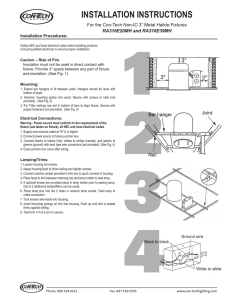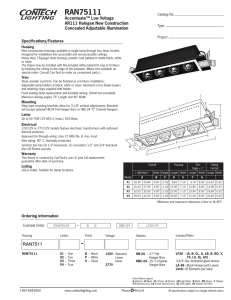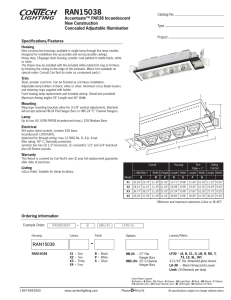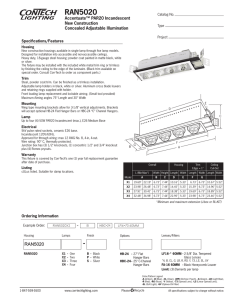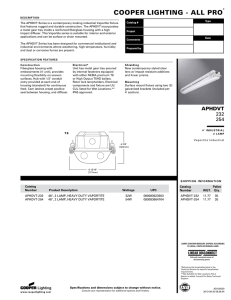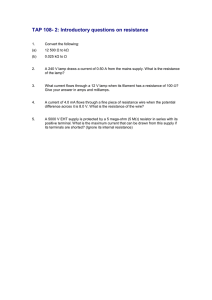save these instructions
advertisement
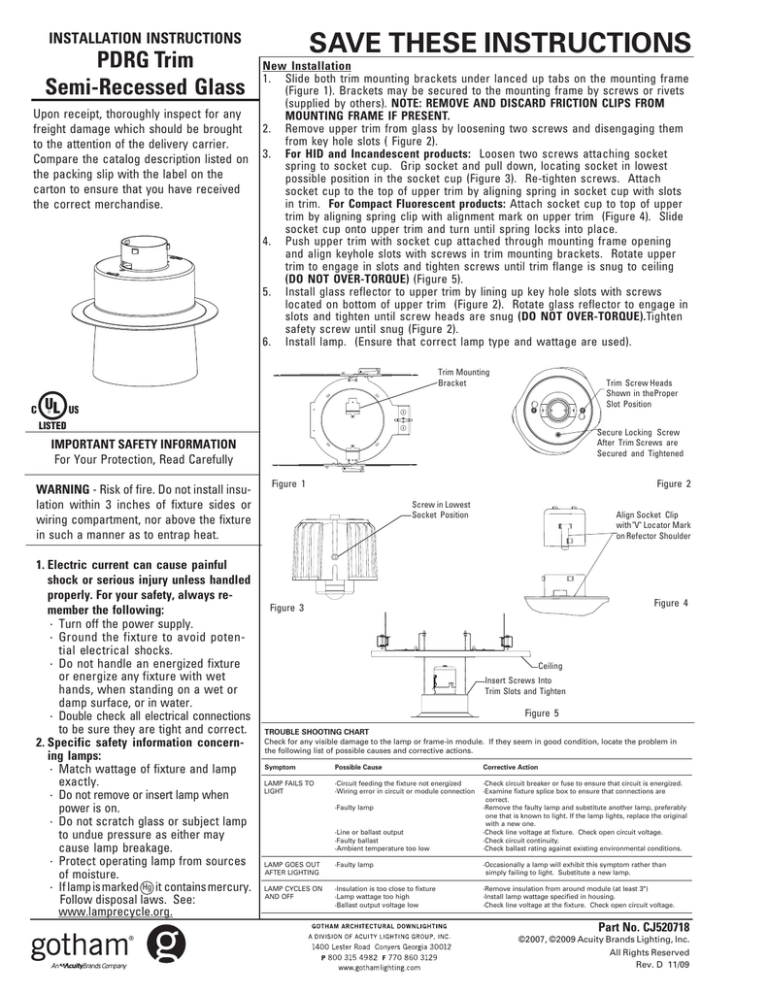
SAVE THESE INSTRUCTIONS INSTALLATION INSTRUCTIONS PDRG Trim Semi-Recessed Glass Upon receipt, thoroughly inspect for any freight damage which should be brought to the attention of the delivery carrier. Compare the catalog description listed on the packing slip with the label on the carton to ensure that you have received the correct merchandise. New Installation 1. Slide both trim mounting brackets under lanced up tabs on the mounting frame (Figure 1). Brackets may be secured to the mounting frame by screws or rivets (supplied by others). NOTE: REMOVE AND DISCARD FRICTION CLIPS FROM MOUNTING FRAME IF PRESENT. 2. Remove upper trim from glass by loosening two screws and disengaging them from key hole slots ( Figure 2). 3. For HID and Incandescent products: Loosen two screws attaching socket spring to socket cup. Grip socket and pull down, locating socket in lowest possible position in the socket cup (Figure 3). Re-tighten screws. Attach socket cup to the top of upper trim by aligning spring in socket cup with slots in trim. For Compact Fluorescent products: Attach socket cup to top of upper trim by aligning spring clip with alignment mark on upper trim (Figure 4). Slide socket cup onto upper trim and turn until spring locks into place. 4. Push upper trim with socket cup attached through mounting frame opening and align keyhole slots with screws in trim mounting brackets. Rotate upper trim to engage in slots and tighten screws until trim flange is snug to ceiling (DO NOT OVER-TORQUE) (Figure 5). 5. Install glass reflector to upper trim by lining up key hole slots with screws located on bottom of upper trim (Figure 2). Rotate glass reflector to engage in slots and tighten until screw heads are snug (DO NOT OVER-TORQUE).Tighten safety screw until snug (Figure 2). 6. Install lamp. (Ensure that correct lamp type and wattage are used). Trim Mounting Bracket Trim Screw Heads Shown in theProper Slot Position Secure Locking Screw After Trim Screws are Secured and Tightened IMPORTANT SAFETY INFORMATION For Your Protection, Read Carefully WARNING - Risk of fire. Do not install insulation within 3 inches of fixture sides or wiring compartment, nor above the fixture in such a manner as to entrap heat. 1. Electric current can cause painful shock or serious injury unless handled properly. For your safety, always remember the following: · Turn off the power supply. · Ground the fixture to avoid potential electrical shocks. · Do not handle an energized fixture or energize any fixture with wet hands, when standing on a wet or damp surface, or in water. · Double check all electrical connections to be sure they are tight and correct. 2. Specific safety information concerning lamps: · Match wattage of fixture and lamp exactly. · Do not remove or insert lamp when power is on. · Do not scratch glass or subject lamp to undue pressure as either may cause lamp breakage. · Protect operating lamp from sources of moisture. · If lamp is marked Hg it contains mercury. Follow disposal laws. See: www.lamprecycle.org. Figure 2 Figure 1 Screw in Lowest Socket Position Align Socket Clip with "V" Locator Mark on Refector Shoulder Figure 4 Figure 3 Ceiling Insert Screws Into Trim Slots and Tighten Figure 5 TROUBLE SHOOTING CHART Check for any visible damage to the lamp or frame-in module. If they seem in good condition, locate the problem in the following list of possible causes and corrective actions. Symptom Possible Cause Corrective Action LAMP FAILS TO LIGHT ·Circuit feeding the fixture not energized ·Wiring error in circuit or module connection ·Check circuit breaker or fuse to ensure that circuit is energized. ·Examine fixture splice box to ensure that connections are correct. ·Remove the faulty lamp and substitute another lamp, preferably one that is known to light. If the lamp lights, replace the original with a new one. ·Check line voltage at fixture. Check open circuit voltage. ·Check circuit continuity. ·Check ballast rating against existing environmental conditions. ·Faulty lamp ·Line or ballast output ·Faulty ballast ·Ambient temperature too low LAMP GOES OUT AFTER LIGHTING ·Faulty lamp ·Occasionally a lamp will exhibit this symptom rather than simply failing to light. Substitute a new lamp. LAMP CYCLES ON AND OFF ·Insulation is too close to fixture ·Lamp wattage too high ·Ballast output voltage low ·Remove insulation from around module (at least 3") ·Install lamp wattage specified in housing. ·Check line voltage at the fixture. Check open circuit voltage. Part No. CJ520718 ©2007, ©2009 Acuity Brands Lighting, Inc. All Rights Reserved Rev. D 11/09
